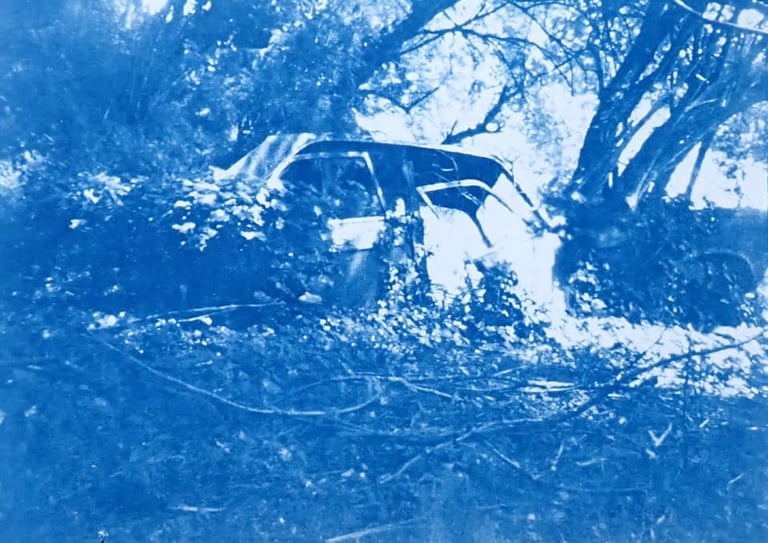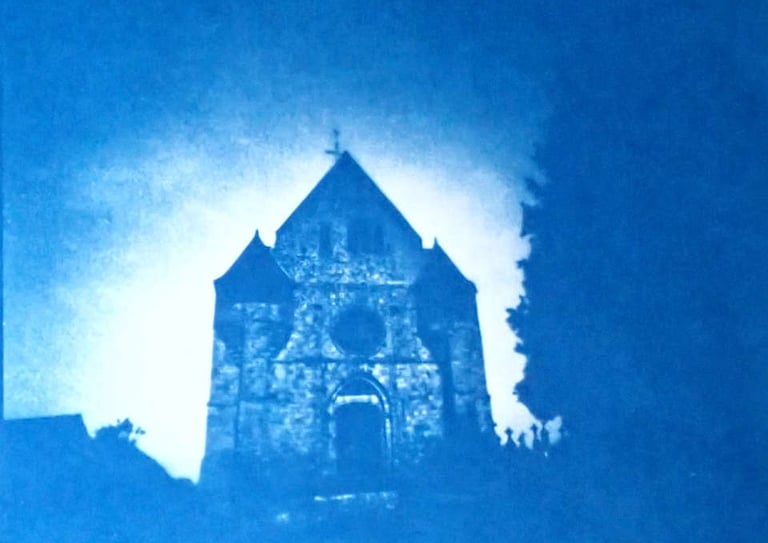I call them Cyanopés
Since the sun has finally returned, temporarily it seems, I continued the cyanotype tests using paper negatives exposed to the pinhole camera and it works. It even works very well. So I decided to give a name to this process: cyanopé, contraction of cyanotype and stenopé, french name for pinhole camera.
If you know a name for this technique I am interested, if there is not yet one you are free to use cyanopé or invent another, otherwise you will have to use the much longer formula of “cyanotype print from a negative exposed to the pinhole”. In any case, from now on my pinhole positives will be presented in cyanopé as this process is so nice to me, it has become my preferred medium.
Using this technique adds to the zen side of the pinhole camera. In addition to the necessarily long exposure time of the pinhole camera, there is also the very long exposure to the sun of the cyanotype. Here in the North of France I must expose the contact print for at least 3 hours in direct sunlight, 3 and a half hours if the sky is dotted with clouds and up to more than 4 hours if the sky is overcast. If it is too overcast the result will be underexposed and you will have to wait for a more favorable day. I have read here and there that overexposure of a cyanotype is almost impossible, that is not what I see. I've had overexposed cyanopés before.
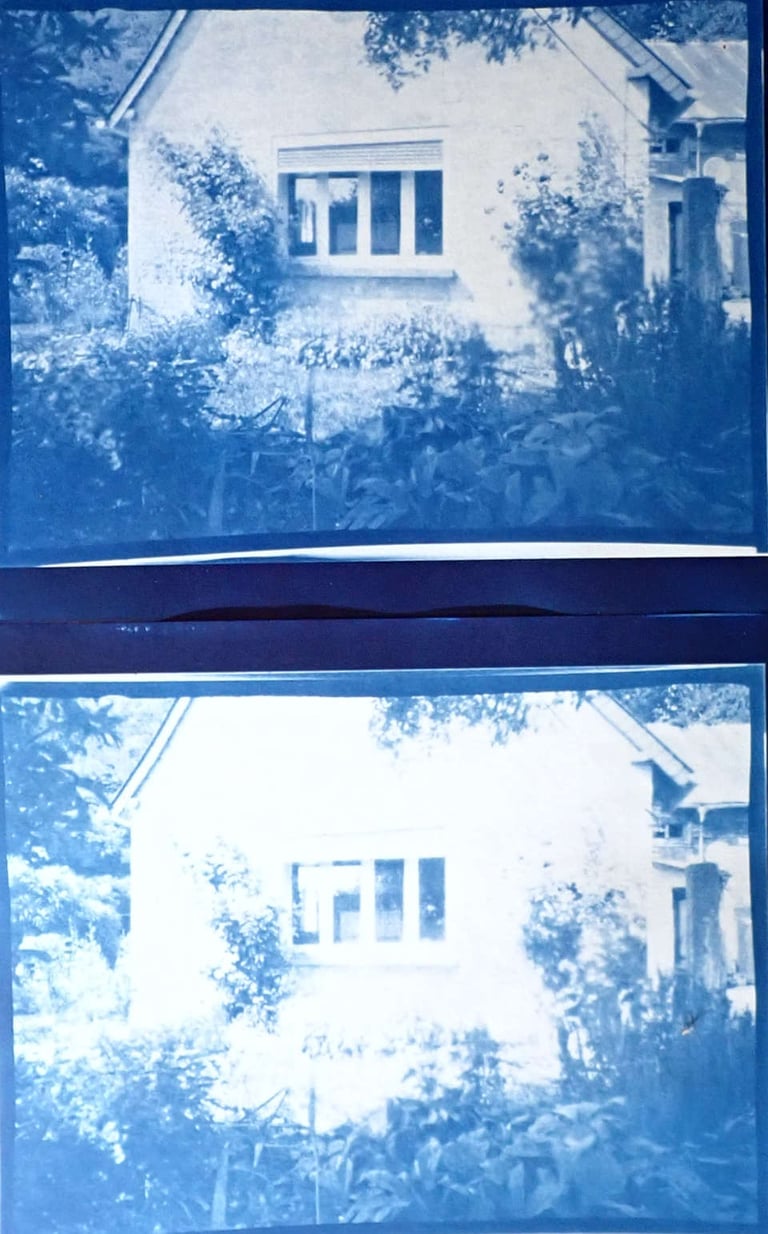

The second print is clearly overexposed
Then comes the problem of contrast. In order to obtain strong contrasts I did not pre-flash this photo:
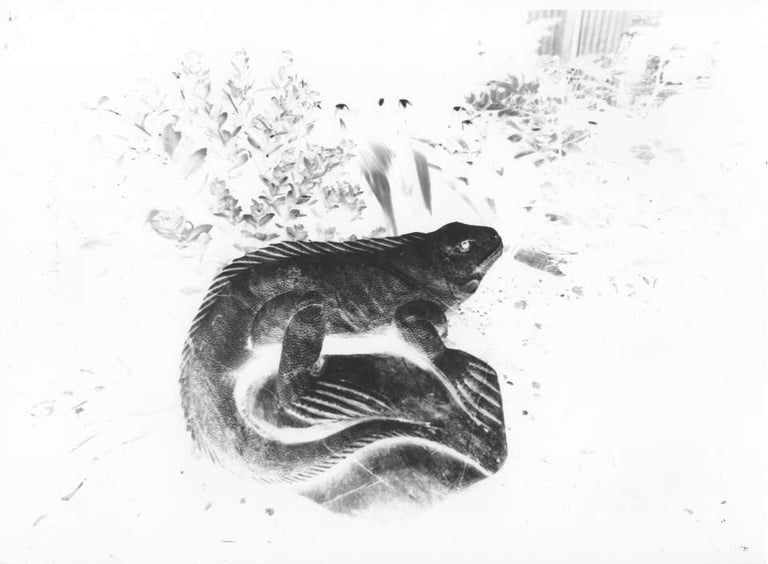

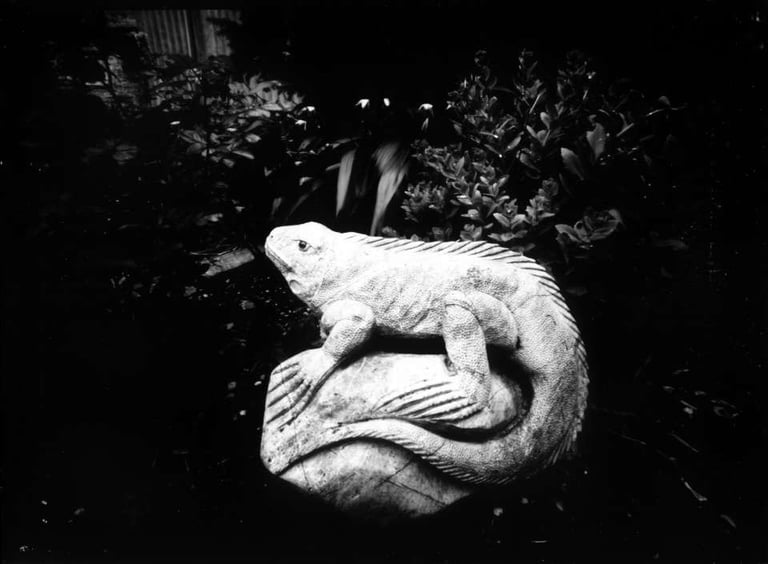

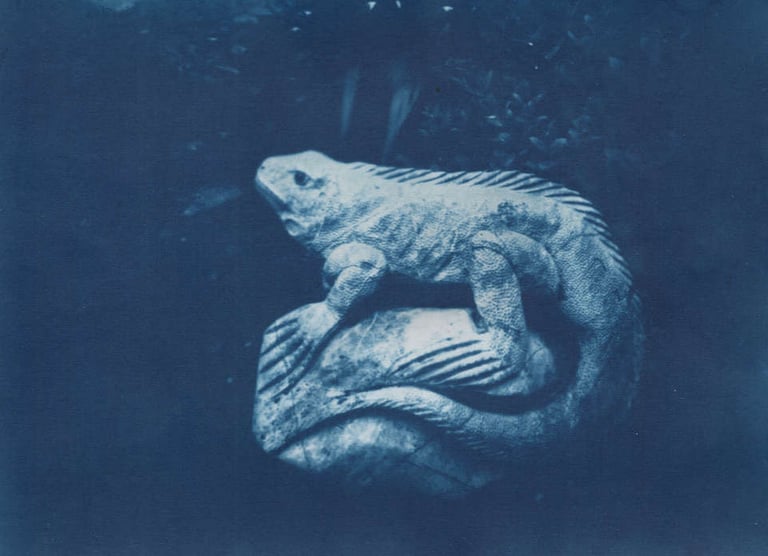

Result: strong contrasts on the cyanopé even if it is a little underexposed.
If the negative is pre-flashed, if we therefore have a good latitude between white and black, this is also found on the cyanopé. So I keep the habit of pre-flashing the paper. If I am considering a deliberately high-contrast cyanopé I will use a non-pre-flashed paper especially for the planned photo.
The pinhole process generally offers predictable results as long as you control the exposure depending on the paper used, the cyanopé is not at all as predictable. You prepare the sensitized paper 12 hours in advance, you expose the same photo for 3 hours for a clear sky on Monday and the result is perfect. You follow the exact same process the next day with the same clear skies and the result may be more than average. Each cyanopé is different, as if an element of randomness sneaked into the process. Each cyanopé is unique, which adds to the magic of this process.
Long pinhole time, very long exposure time of the cyanopé, uniqueness of the result, the photographic process becomes an even more artistic practice. In addition to the moonlight vision aspect, cyanopé offers an almost drawn version of the photo, a kind of watercolor style. But what is the etymology of photography? Photo = light, graphics = drawing, photography = drawing with light. The circle is closed.
